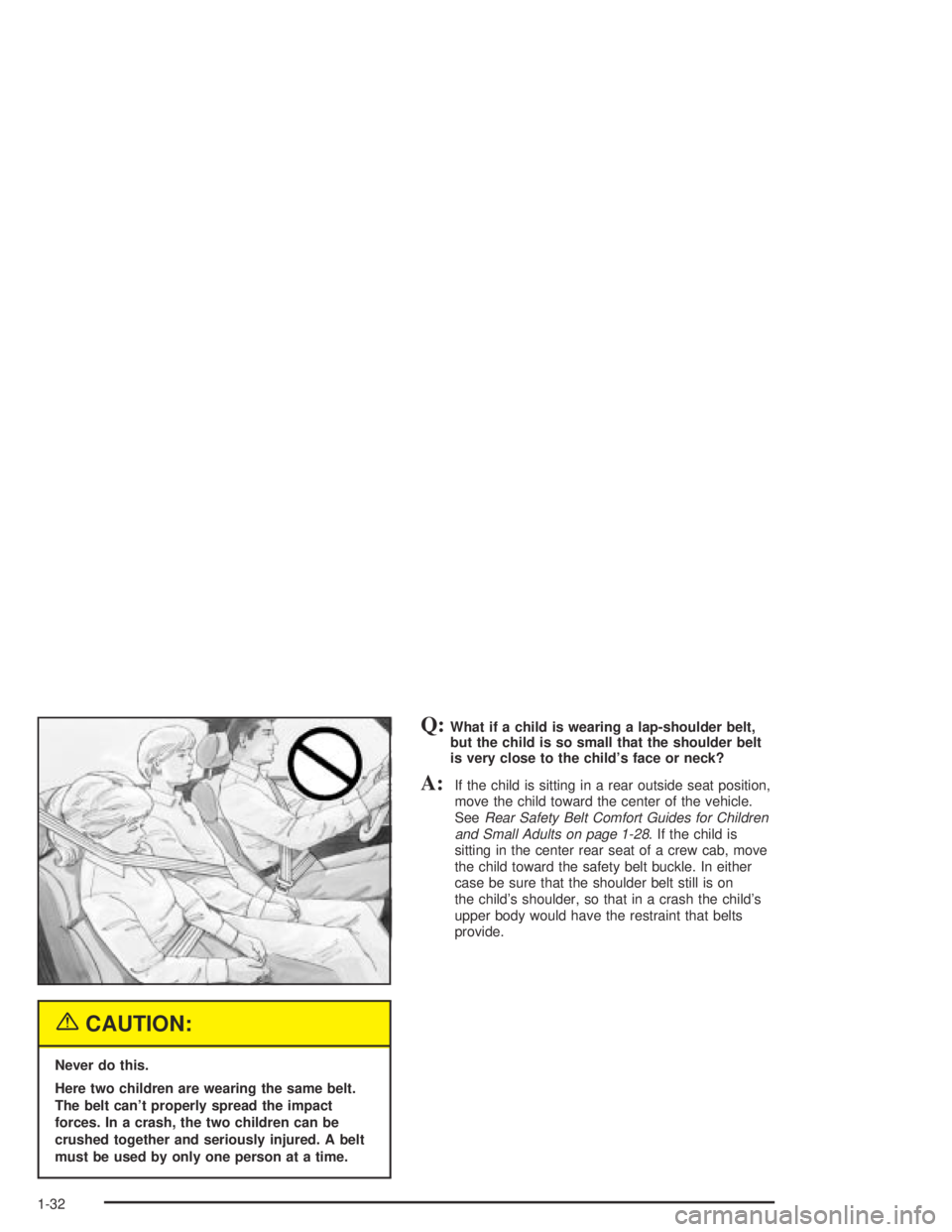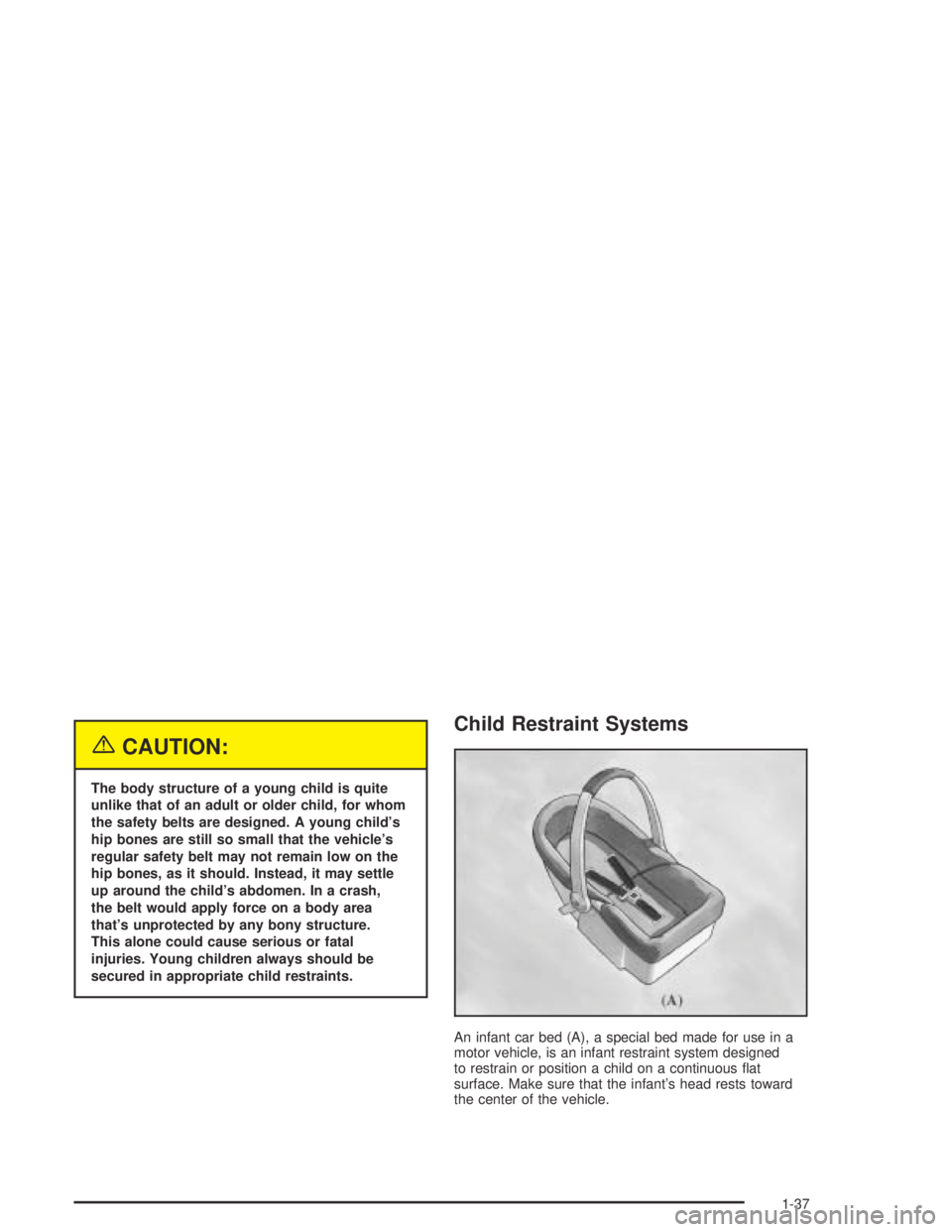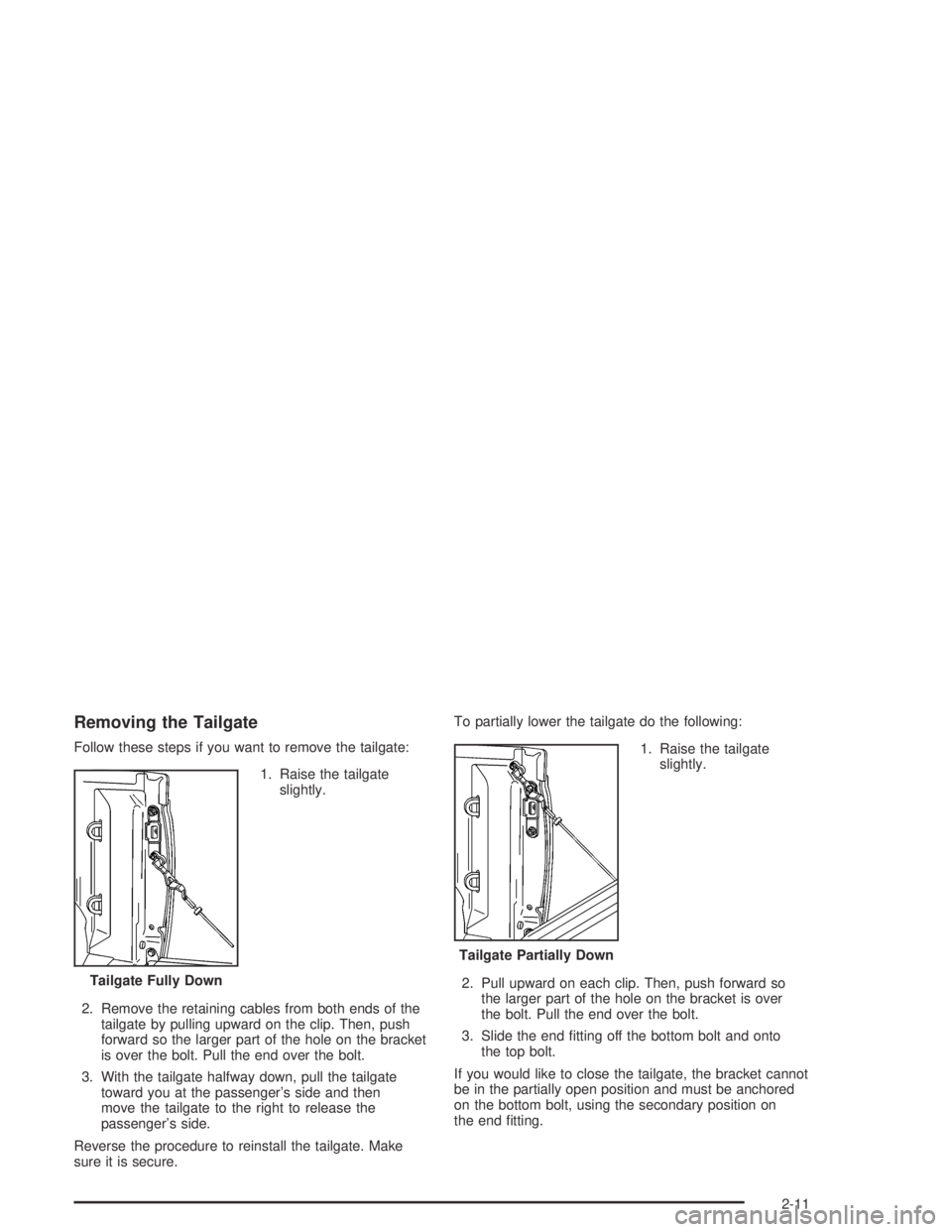2004 GMC CANYON tow
[x] Cancel search: towPage 1 of 420

Seats and Restraint Systems........................... 1-1
Front Seats
............................................... 1-3
Rear Seats
............................................... 1-9
Safety Belts
.............................................1-11
Child Restraints
.......................................1-31
Air Bag Systems
......................................1-60
Restraint System Check
............................1-73
Features and Controls..................................... 2-1
Keys
........................................................ 2-2
Doors and Locks
....................................... 2-7
Windows
.................................................2-12
Theft-Deterrent Systems
............................2-14
Starting and Operating Your Vehicle
...........2-16
Mirrors
....................................................2-36
OnStar
®System
......................................2-41
Storage Areas
.........................................2-42
Instrument Panel............................................. 3-1
Instrument Panel Overview
.......................... 3-2
Climate Controls
......................................3-18
Warning Lights, Gages, and Indicators
........3-22
Driver Information Center (DIC)
..................3-37
Audio System(s)
.......................................3-42Driving Your Vehicle....................................... 4-1
Your Driving, the Road, and Your Vehicle
........ 4-2
Towing
...................................................4-47
Service and Appearance Care.......................... 5-1
Service
..................................................... 5-3
Fuel
......................................................... 5-5
Checking Things Under the Hood
...............5-10
Rear Axle
...............................................5-47
Four-Wheel Drive
.....................................5-48
Front Axle
...............................................5-49
Bulb Replacement
....................................5-50
Windshield Wiper Blade Replacement
.........5-55
Tires
......................................................5-57
Appearance Care
.....................................5-94
Vehicle Identi�cation
...............................5-103
Electrical System
....................................5-103
Capacities and Speci�cations
...................5-108
Maintenance Schedule..................................... 6-1
Maintenance Schedule
................................ 6-2
Customer Assistance and Information.............. 7-1
Customer Assistance and Information
........... 7-2
Reporting Safety Defects
...........................7-10
Index.................................................................1
2004 GMC Canyon Owner ManualM
Page 10 of 420

Power Seats
If your vehicle has this feature, there will be a control on
the outboard side of the front seat(s).Horizontal Control:Raise or lower the front of the seat
by raising or lowering the forward edge of the control.
Raise or lower the rear of the seat by raising or lowering
the rear edge of the control.
Move the seat forward or rearward by moving the whole
control toward the front or the rear of the vehicle.
Moving the whole control up or down raises or lowers
the whole seat.
Vertical Control:This control reclines the seatbacks.
SeeReclining Seatbacks on page 1-6for more
information.
1-4
Page 12 of 420

Reclining Seatbacks
Your vehicle may have reclining seatbacks.
To manually recline your seatback, lift the lever on the
outboard side of the seat.
Release the lever to lock the seatback where you want
it. Pull up on the lever and without pushing on the
seatback, the seat will go to an upright position.
If you have power seats, you can use the vertical power
seat control to recline the seatback. Move the reclining
front seatback forward or rearward by moving the control
toward the front or rear of the vehicle.But don’t have a seatback reclined if your vehicle is
moving.
1-6
Page 38 of 420

{CAUTION:
Never do this.
Here two children are wearing the same belt.
The belt can’t properly spread the impact
forces. In a crash, the two children can be
crushed together and seriously injured. A belt
must be used by only one person at a time.
Q:What if a child is wearing a lap-shoulder belt,
but the child is so small that the shoulder belt
is very close to the child’s face or neck?
A:If the child is sitting in a rear outside seat position,
move the child toward the center of the vehicle.
SeeRear Safety Belt Comfort Guides for Children
and Small Adults on page 1-28. If the child is
sitting in the center rear seat of a crew cab, move
the child toward the safety belt buckle. In either
case be sure that the shoulder belt still is on
the child’s shoulder, so that in a crash the child’s
upper body would have the restraint that belts
provide.
1-32
Page 43 of 420

{CAUTION:
The body structure of a young child is quite
unlike that of an adult or older child, for whom
the safety belts are designed. A young child’s
hip bones are still so small that the vehicle’s
regular safety belt may not remain low on the
hip bones, as it should. Instead, it may settle
up around the child’s abdomen. In a crash,
the belt would apply force on a body area
that’s unprotected by any bony structure.
This alone could cause serious or fatal
injuries. Young children always should be
secured in appropriate child restraints.
Child Restraint Systems
An infant car bed (A), a special bed made for use in a
motor vehicle, is an infant restraint system designed
to restrain or position a child on a continuous �at
surface. Make sure that the infant’s head rests toward
the center of the vehicle.
1-37
Page 73 of 420

What Makes an Air Bag In�ate?
In an impact of sufficient severity, the air bag sensing
system detects that the vehicle is in a crash. For both
frontal and side impact air bags, the sensing system
triggers a release of gas from the in�ator, which in�ates
the air bag. The in�ator, air bag, and related hardware
are all part of the air bag modules inside the steering
wheel and in the instrument panel in front of the
right front passenger. For vehicles with side impact
air bags, the air bag modules are located in the ceiling
of the vehicle, near the side windows.
How Does an Air Bag Restrain?
In moderate to severe frontal or near frontal collisions,
even belted occupants can contact the steering wheel
or the instrument panel. In moderate to severe side
collisions, even belted occupants can contact the inside
of the vehicle. The air bag supplements the protection
provided by safety belts. Air bags distribute the force of
the impact more evenly over the occupant’s upper
body, stopping the occupant more gradually. But the
frontal air bags would not help you in many types
of collisions, including rollovers, rear impacts, and many
side impacts, primarily because an occupant’s motion
is not toward the air bag. Side impact air bags would not
help you in many types of collisions, including frontal
or near frontal collisions, rollovers, and rear impacts,
primarily because an occupant’s motion is not toward
those air bags. Air bags should never be regarded
as anything more than a supplement to safety belts, and
then only in moderate to severe frontal or near-frontal
collisions for the driver’s and right front passenger’s
frontal air bags, and only in moderate to severe
side collisions for the side impact air bags.
1-67
Page 91 of 420

Removing the Tailgate
Follow these steps if you want to remove the tailgate:
1. Raise the tailgate
slightly.
2. Remove the retaining cables from both ends of the
tailgate by pulling upward on the clip. Then, push
forward so the larger part of the hole on the bracket
is over the bolt. Pull the end over the bolt.
3. With the tailgate halfway down, pull the tailgate
toward you at the passenger’s side and then
move the tailgate to the right to release the
passenger’s side.
Reverse the procedure to reinstall the tailgate. Make
sure it is secure.To partially lower the tailgate do the following:
1. Raise the tailgate
slightly.
2. Pull upward on each clip. Then, push forward so
the larger part of the hole on the bracket is over
the bolt. Pull the end over the bolt.
3. Slide the end �tting off the bottom bolt and onto
the top bolt.
If you would like to close the tailgate, the bracket cannot
be in the partially open position and must be anchored
on the bottom bolt, using the secondary position on
the end �tting. Tailgate Fully Down
Tailgate Partially Down
2-11
Page 96 of 420

Passlock®
Your vehicle is equipped with the Passlock®
theft-deterrent system.
Passlock®is a passive theft-deterrent system. Passlock®
enables fuel if the ignition lock cylinder is turned with
a valid key. If a correct key is not used or the ignition
lock cylinder is tampered with, the fuel system is
disabled and the vehicle will not start.
During normal operation, the security light will turn off
approximately �ve seconds after the key is turned
to RUN. SeeSecurity Light on page 3-35.
If the engine stalls and the security light �ashes, wait
about 10 minutes until the light stops �ashing before
trying to restart the engine. Remember to release
the key from START as soon as the engine starts.
If the engine does not start after three tries, the vehicle
needs service.
If the engine is running and the security light comes on,
you will be able to restart the engine if you turn the engine
off. However, your Passlock
®system is not working
properly and must be serviced by your dealer. Your
vehicle is not protected by Passlock
®at this time. You
may also want to check the fuse seeFuses and Circuit
Breakers on page 5-104. See your dealer for service.
In an emergency, call the GM Roadside Assistance
Center. SeeRoadside Assistance Program on page 7-6.
Starting and Operating Your
Vehicle
New Vehicle Break-In
Notice:Your vehicle does not need an elaborate
“break-in.” But it will perform better in the long run
if you follow these guidelines:
Keep your speed at 55 mph (88 km/h) or less
for the �rst 500 miles (805 km).
Do not drive at any one speed — fast or
slow — for the �rst 500 miles (805 km).
Do not make full-throttle starts.
Avoid making hard stops for the �rst 200 miles
(322 km) or so. During this time your new brake
linings are not yet broken in. Hard stops with new
linings can mean premature wear and earlier
replacement. Follow this breaking-in guideline
every time you get new brake linings.
Do not tow a trailer during break-in. SeeTowing a
Trailer on page 4-60for more information.
2-16